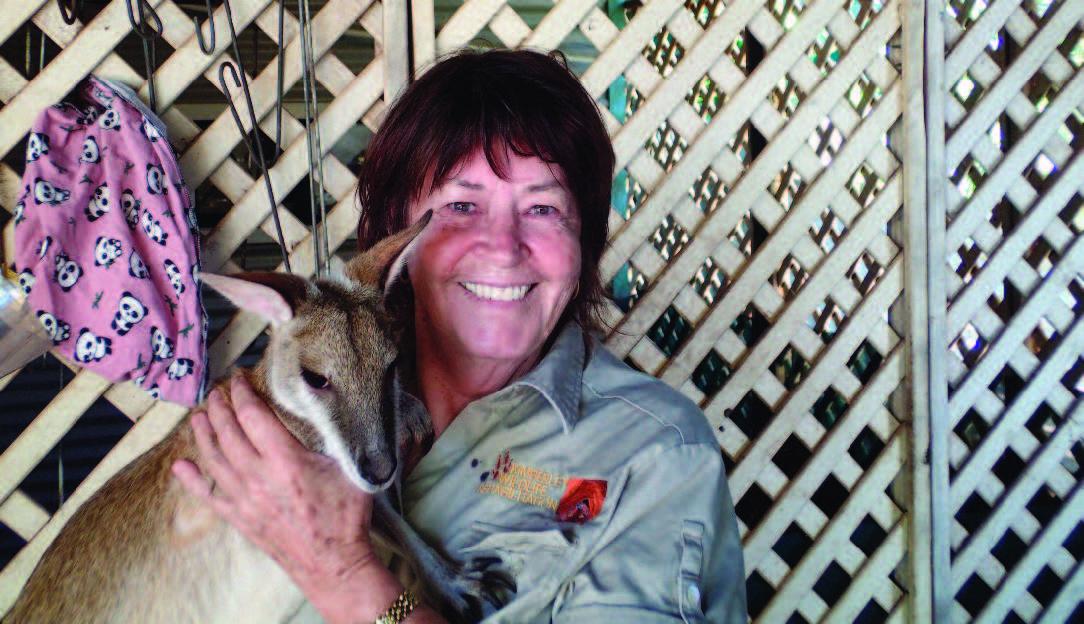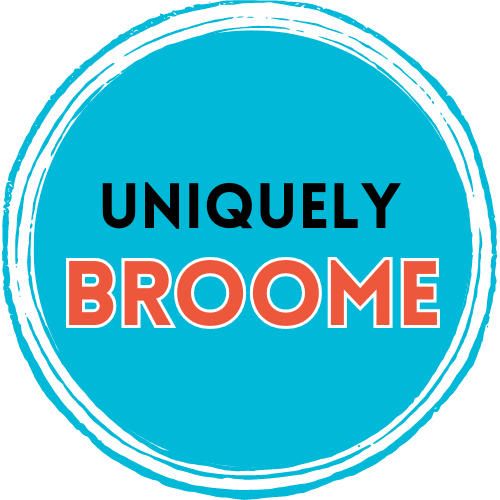
2016 - JAN'S JOEYS
If you visit the Courthouse Markets on a Saturday you will see the stall of Kimberley Wildlife. Usually there are a few joeys in their bags, and they sell merchandise to fundraise so these joeys can be rehabilitated back to the wild. Jan Martin and her small, dedicated team plus volunteers saved hundreds of lives of all sorts of wildlife. I visited Jan at her home to see how the joeys were going.
“When I was a child, I wanted to be a Vet unfortunately my mother died when I was very young and everyone talked me into doing a Commercial Course. Even at a young age people would bring me their pets if they were sick.
In 1992 I came to Broome on a holiday. I think that is how most people’s stories start about coming to Broome. I first lived at the Broome Caravan Park and then I moved out to Coconut Wells (north of Broome) living on a property with a little cottage. A young boy that lived on the property said that there was an injured wallaby on the road, he had to put it down and then we found that there was a joey in the pouch. So, I took the joey home. I used to have a stall at the markets selling clothes and I’d take the joey to the markets with me. Pat Lowe was the first person who brought me an orphaned red kangaroo from Halls Creek, then someone else brought me in one and then it just steam rolled from there. Joyce White had a euro and she rang the Pet Motel to see if they would look after it while she went to hospital, they said not really but ring Jan Martin she’ll do it. So, we got together to form Broome Wildlife.
At first it was a lot of trial and error but the only way to learn is through networking. There was a vet in the Darwin Wildlife Park, his name was Derek Speilman, and they have the same species as we do in Darwin, so he was a great source of information. Also, the Chidlow Marsupial Hospital in Perth, which was run by a lady by the name of Liz Appelt and we talked a lot. You learn something new every day looking after wildlife.
The joeys are lactose intolerant and research done few years ago by Dr Ben Cox in Victoria as to why a kangaroo that is born as an embryo and the survival rate is high and cows, horses and humans have all sort of respiratory issues when they are premature. What he found in the marsupials is that the milk has got antibodies in it throughout the whole period of lactation and those antibodies are 100 times stronger than penicillin. So, if we get the joey when it is really little you cannot replicate exactly what the mother can give them.
I have not worked out the exact cost of how much a joey costs from the time I get it to the time it is released but a wallaby could be up to $400 - $500 and if I get a big red kangaroo then is could be closer to $1000 because they are bigger, and you have them for up to 2 years before they are released. This includes all the food, milk, vet bills, power etc. with no costing of my time. We make our own pouches, we have to have blankets and they have their own dedicated freezer.
They mainly eat lucerne chaff, sweet potato, carrots, corn and apples. The milk comes from Sydney and is in a powder form. So, I will order up to 40kgs at a time, there is different gradings of milk. As they grow their proteins and lipids change and so the formula changes.
I have a few joeys that are blind, usually from trauma. I take them to OPSM to get their eyes checked. They have the equipment to see right at the back of the eye. They get cataracts from bad nutrition or trauma. I get special eye drops from England and that dissolves the cataracts. It takes a lot of time, but it works. That is also expensive as everything else it. We get all different species coming to us – euros, red, wallabies, northern nail tail wallabies, spectacled hare wallaby, golden backed tree rat, bilbies, quolls, and narbalek. Our whole aim is to rehabilitate them back to the bush.
We have a fenced block of land at Lullfitz Drive which we lease from Department of Parks and Wildlife and through our association them would like to set this up as a wildlife rehabilitation centre with a hospital, caretakers house, education facility and down the track endangered breeding program. Our first step is to get a caretakers accommodation built as we need to make the area secure.
We have just finished building a facility up the Gibb River Road near Windjana Gorge. We have a great person up there who monitor them and supplement their feed with some lucerne chaff and provide water. They are in a fenced area with very little human contact. They revert very quickly to being wild. When they are read to be released the gates are left open so they can come and go as they please until they assimilate with the local wild ones, they have a motion sensor camera set up, so he knows what movement there is. The area has about 100 metres of fencing and it is predator proofed. It cost around $12,000 and Woodside gave us the fencing that was up at James Prices Point.
With our small, dedicated team of Fran Murikami, Sandy Trevor, Lindy Morison, Danny my son and Peter Hayward. It is a full-on commitment. Most of our volunteers are backpackers; up to the 31st August 2015 they would work on a voluntary basis to get their 2nd year visa. This has now all changed so it may be more difficult to encourage backpackers to volunteer. A lot of our vollies work full time but they come in to help with cutting up the food, pressure clean the yard, clean the food bowls bring in the washing – pouches and blankets, make up the formulas and feed the joeys. The volunteers that I have are incredible. I have one now working on our website and we are looking into doing some crowd funding on the net. Getting grants is tightening up and getting harder”.
So, if you are reading this and want to volunteer – adopt a joey or donate to Kimberley Wildlife give Jan a call on 9193 7489. For further information have a look at their facebook page Kimberley Wildlife Rehabilitation Inc. They are working towards a dream to have a purpose-built rehabilitation centre at our block at Lullfitz Drive.
